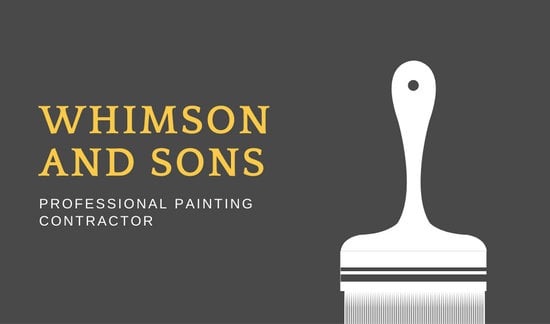Seasonal Factors In Industrial Outside Painting: Key Insights You Must Recognize
Seasonal Factors In Industrial Outside Painting: Key Insights You Must Recognize
Blog Article
Web Content By-Regan Chaney
When you're preparing a business outside paint job, seasonal elements can make or damage your results. You'll wish to take into consideration just how temperature level and moisture influence paint application and drying times. Selecting the best period can ensure your paint sticks effectively and lasts much longer. But which seasons are really the very best for this type of job? Let's check out the key elements that can affect your task's success.
The Impact of Temperature Level on Paint Application
When you're planning an industrial external paint project, the temperature can dramatically impact just how well the paint adheres and dries.
Ideally, you wish to paint when temperatures range in between 50 ° F and 85 ° F. If it's as well cool, the paint may not cure appropriately, leading to issues like peeling off or breaking.
On read on , if it's also warm, the paint can dry out also swiftly, preventing proper attachment and resulting in an irregular surface.
You should likewise consider the moment of day; early morning or late afternoon offers cooler temperatures, which can be more positive.
Always inspect the supplier's suggestions for the certain paint you're making use of, as they commonly give guidance on the ideal temperature level range for optimum outcomes.
Humidity and Its Effect on Drying Times
Temperature level isn't the only ecological factor that affects your industrial external painting job; humidity plays a considerable function also. High moisture degrees can slow down drying times significantly, affecting the general quality of your paint work.
When the air is filled with dampness, the paint takes longer to cure, which can cause issues like bad bond and a greater risk of mildew development. If you're repainting on a particularly moist day, be prepared for extensive delay times in between layers.
It's crucial to monitor local weather and plan appropriately. Preferably, go for moisture levels in between 40% and 70% for ideal drying.
Keeping visit here in mind ensures your job stays on track and supplies a lasting coating.
Best Seasons for Commercial Outside Paint Projects
What's the most effective time of year for your industrial outside painting tasks?
Springtime and very early autumn are usually your best choices. Throughout these seasons, temperatures are mild, and humidity levels are often lower, creating excellent problems for paint application and drying out.
click the up coming post , which can create paint to completely dry too quickly, leading to poor attachment and surface. Likewise, winter season's chilly temperature levels can prevent correct drying out and curing, taking the chance of the longevity of your paint work.
Aim for days with temperature levels in between 50 ° F and 85 ° F for ideal outcomes. Bear in mind to inspect the local weather forecast for rain, as wet problems can destroy your job.
Planning around these elements guarantees your painting project runs smoothly and lasts much longer.
Conclusion
In conclusion, planning your industrial external paint tasks around seasonal considerations can make a substantial distinction in the end result. By scheduling work during the perfect temperatures and moisture degrees, you'll ensure much better adhesion and drying out times. Remember to keep straight line in paint on local weather forecasts and select the right time of year-- springtime and very early loss are your best options. Taking these steps will certainly assist you achieve a long lasting and professional surface that lasts.
